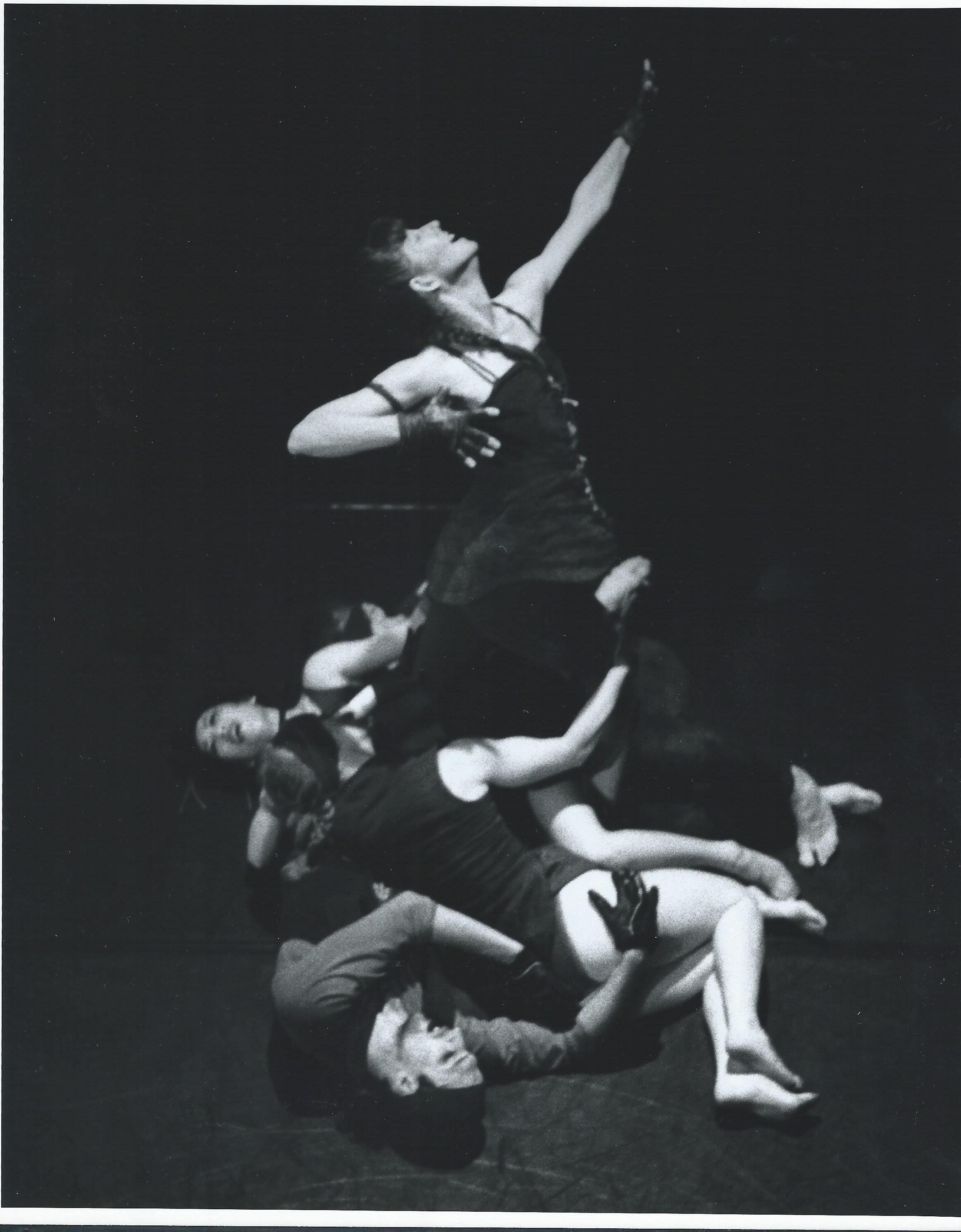Counterplay

Counterplay
1994
About
Counterplay tells the story of union, loss, love and betrayal, pursuit and flight.
Karen Jamieson and Jeff Corness’s 10th collaboration together, Counterplay, is “a return to a more conventional division of labour; to the antithesis of the kind of collaboration Jamieson and Corness have been straining toward in works like Gawa Gyani and Tales of Descent. In these earlier pieces the two sought to erase the lines between their respective disciplines. ‘I’m trying to find the dance language without it being tangled up with the language of music, the language of acting,’ Jamieson says.
Where Tales of Descent was entirely dependent on the multidisciplinary talents of its performers, Counterplay is trying to tell its story through music and dance alone, without spoken text.
‘We’re interested in observing the boundaries, not crossing them this time,’ Corness says. ‘It’s a point-counterpoint thing.’ Jamieson adds: ‘What we’re looking for is maximum union, and at the same time maximum separation.’
Corness scored the piece for cello, bass clarinet, percussion, piano and tape and electronics. To match Jamieson’s pairs of opposites, Corness juxtaposed fragmenting sounds with sustains, for instance. In the second act, where Jamieson is exploring the notion of ‘Prisoner’ and ‘Liberator’ Corness matched the first with a baroque passacaglia, a rigid box of repeating bass notes in which a whole-tone melody can be fitted; the second, ‘Liberator’ voice, is a clarinet solo, gestural and free in the manner of John Zorn.”
- Michael Scott
“Opposites attract Jamieson back within the boundaries”
The Vancouver Sun, May 19, 1994
The People
Composer: Jeff Corness
Choreographer: Karen Jamieson
Performers: Chantal Deeble, Kay Huang, Hiromoto Ida, Karen Jamieson, Jud Martell, and Andrew Olewine
Musicians: Peter Hurst, piano; Jeff Corness, synthesizers; Lauri Lyster, percussion; Lori Freedman, clarinets; Peggy Lee, cello
Costume Designer: Charlotte Burke
Lighting Design: Gerald King
Assistant to the Artistic Director: Daina Balodis
Advisor: Doreen Jensen
Dance Teacher: Aaron Shields
Reviews
“Like a Rorshach inkblot, Karen Jamieson and Jeff Corness’ latest work, Counterplay, can mean anything the beholder’s subconscious needs it to mean. Hunter and hunted, oppressor and oppressed, composer and choreographer, the Other and the Self, Counterplay calls up a host of symbiotic possibilities. But in a radical and perplexing departure from a decade of previous work, Jamieson and Corness offer no signposts – as if two magical realist painters had switched overnight to abstract expressionism.
Counterplay comes unadorned: pure movement meeting pure music. Counterplay is a dark and elusive work, without question. But offers proof of the white heat Jamieson and Corness still draw from one another.”
- Michael Scott
“Counterplay puts pure movement to pure music”
The Vancouver Sun, May 27, 1994
“By far the most polished and concise of her recent ventures, Counterplay is a complex and moving production.
In Counterplay, although Jamieson reverts to letting dancers dance and musicians make music, she has not thrown the baby out with the bath water. She uses her fascination with classical archetypes as a framework inside which opposing dynamics create a sense of mystery and tension in dance.
In the absence of linear plot development, the audience is free to elaborate on the clues to the mysteries of Counterplay. Opposites are teasingly aligned: in choreography that alludes to the classical and the modern, in polarizing emotional states, and even in simple placement of the heroes on facing balconies, the only set pieces.
Yet some of the most powerful scenes occur when the ensemble dances. They spin like tops, catch one another in mid-flight, and hurl themselves into a writhing pile of bodies in a style halfway between a scrimmage and a scene from Hieronymus Bosch. Anguished or menacing, they convey the tortured earnestness of Jamieson’s search for the language of dance. The whole work is sensuous in the extreme, and universal in its bittersweet revelation of the ability in all of us to turn against one another.”
- Louise Whitney
Dance International, Summer 1994



